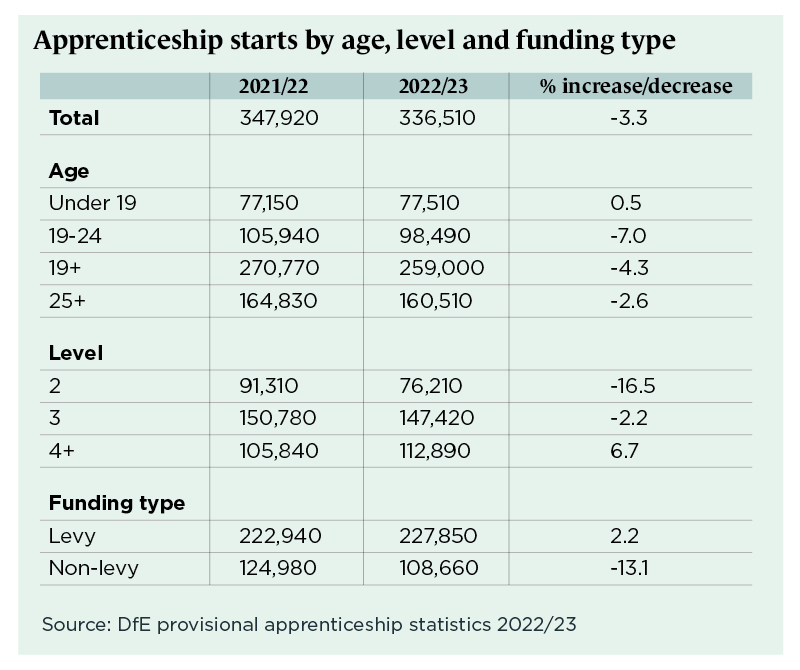I’m sure FE Week readers will have seen the main headlines from the prime minister and secretary of state for education’s conference speeches in Manchester and their opposition counterparts in Liverpool. What those at home don’t see is some of the interesting debates and meetings that take place outside the main hall across the rest of the conference.
These fringe meetings often give a glimpse into political parties’ deeper thinking about future direction. At this year’s conferences, a recurring theme for discussions was the potential to refine the apprenticeship levy. We already knew that Labour are committed to moving to a wider “skills and growth levy”. But with the Liberal Democrats agreeing to reform the levy at their conference, it was interesting to hear so many Tory MPs also suggesting their party should go down this route.
In sum, growing pressure means we’re looking at when, not if, the levy will be reformed.
One of our sector’s major challenges is to offer an apprenticeship system which is properly funded and flexible enough for employers to take full advantage of. With a general election looming, political parties are beginning to put together their manifestos, and we all know that any party serious about governing must put skills at the heart of its plans.
Talk alone won’t cut it, though. We need to see real investment in skills giving learners a real choice of high-quality skills provision. Improving the apprenticeship system must be a major priority for whoever wins the next election.
However, AELP has previously been cautious about advocating for introducing flexibility within the apprenticeship levy. In the 2021/22 financial year, 99.6 per cent of the apprenticeship budget was spent. Last year, with the ending of incentives and an increase in the budget, spend was 96 per cent of the programme budget. This shows that employers are hungry for apprenticeships but that any additional flexibility for levy payers needs to be tempered. Allowing them to access the levy funding for non-apprenticeship training is on the face of it desirable, but should be off-set by dedicated support for SMEs.
It should be done in a gradual way with a ringfenced budget
Putting learner and employer choice first is one of AELP’s core values. Recognising that for some organisations an apprenticeship may not always be the right method for upskilling staff is important. Allowing levy-paying employers a degree of wider flexibility to fund the procurement of high-quality accredited qualifications could be beneficial. However, we should recognise that doing so will put pressure on the apprenticeship programme budget. We cannot afford for the future apprenticeship levy to become a free-for-all; the scope of flexibility needs to be tight, targeted and ideally link back to apprenticeships.
If levy reform is to take place, it should be done in a gradual way with a ringfenced budget that non-levy paying employers can access. This means government must acknowledge the growing divide between the level of money paid through the levy by employers and the actual apprenticeship programme budget. Employers are being short-changed and that extra funding would be transformational.
We also need to recognise the massive role non-levy paying employers play, traditionally taking on a disproportionate number of young people. If we squeeze out SMEs, we squeeze out our young people from apprenticeships. This would have disastrous consequences for social mobility.
In fact, SMEs need more support and a straightforward way for that to happen would be by removing the requirement for these businesses to co-invest 5 per cent. These types of employers often do not have the capacity to navigate the existing system, and the co-investment model discourages them from investing in skills.
Following the removal of the non-levy cap, the scrapping of co-investment would also mean no need for levy transfer functionality. This has been a well-meaning part of the system but adds complexity and bureaucracy. With additional flexibility in the levy, it would likely be utilised less as levy payers would have less to transfer.
At the heart of a sustainable skills system will be ensuring the apprenticeship model is fit for purpose and fit for the future. Levy reform can play a part in that – but it must be done in a well thought-out and sensible way.


